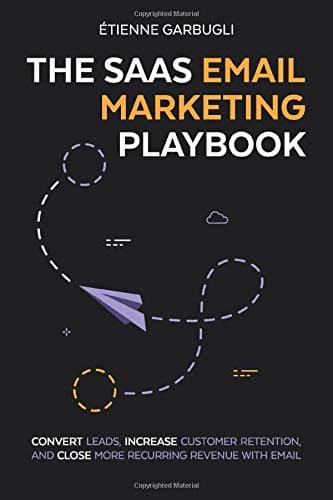The SaaS Email Marketing Playbook: Convert Leads, Increase Customer Retention, and Close More Recurring Revenue With Email
Étienne Garbugli

No matter how great your product is, it’s very likely that 40 to 60% of free trials never see your product a second time. This means that you stand to lose up to 60% of your hard-earned signups. Do you just let them go?
Email marketing is one of the highest leverage activities in a SaaS business. It can help:
• increase onboarding and trial conversions;
• reduce churn; and
• grow monthly recurring revenue (MRR).
By introducing a single campaign today, you could significantly increase your conversions, and get the benefits of that increase predictably and repeatedly, week after week. That’s the beauty of automation. It’s also how we created an upsell program at LANDR that was generating up to 42% of weekly subscription conversions. When I joined LANDR, we were only sending 3 automated emails (and only 1 of those was performing). By focusing on sending the right email to the right user at the right time, performance jumped up, with increases in:
• product onboarding completion;
• engagement;
• sales; and
• upgrades to annual subscriptions.
Key Summary
The SaaS Email Marketing Playbook is a guide for SaaS businesses on how to use email marketing effectively to increase customer retention, close more recurring revenue and convert leads. The book covers the principles of email marketing, how to create effective email campaigns, how to analyze and optimize performance, and how to create a scalable email marketing strategy.
Takeaways
1. Email marketing should be a key component of a SaaS business’s overall marketing strategy.
2. Use email campaigns to engage with customers and keep them informed about new developments and features.
3. Segment your email list to create targeted campaigns that are relevant to each customer’s needs and interests.
4. Use data and analytics to understand customer behavior and optimize your email campaigns.
5. Create a scalable email marketing strategy that can be easily replicated and improved over time.
6. Test different subject lines, calls-to-action, and email designs to see what works best.
7. Ensure that your emails are optimized for mobile devices and easy to read.
8. Incorporate personalization and automation into your email campaigns to increase relevance and efficiency.
9. Use email campaigns to upsell and cross-sell to existing customers.
10. Continuously monitor and analyze the performance of your email campaigns, and make adjustments as necessary to improve results.